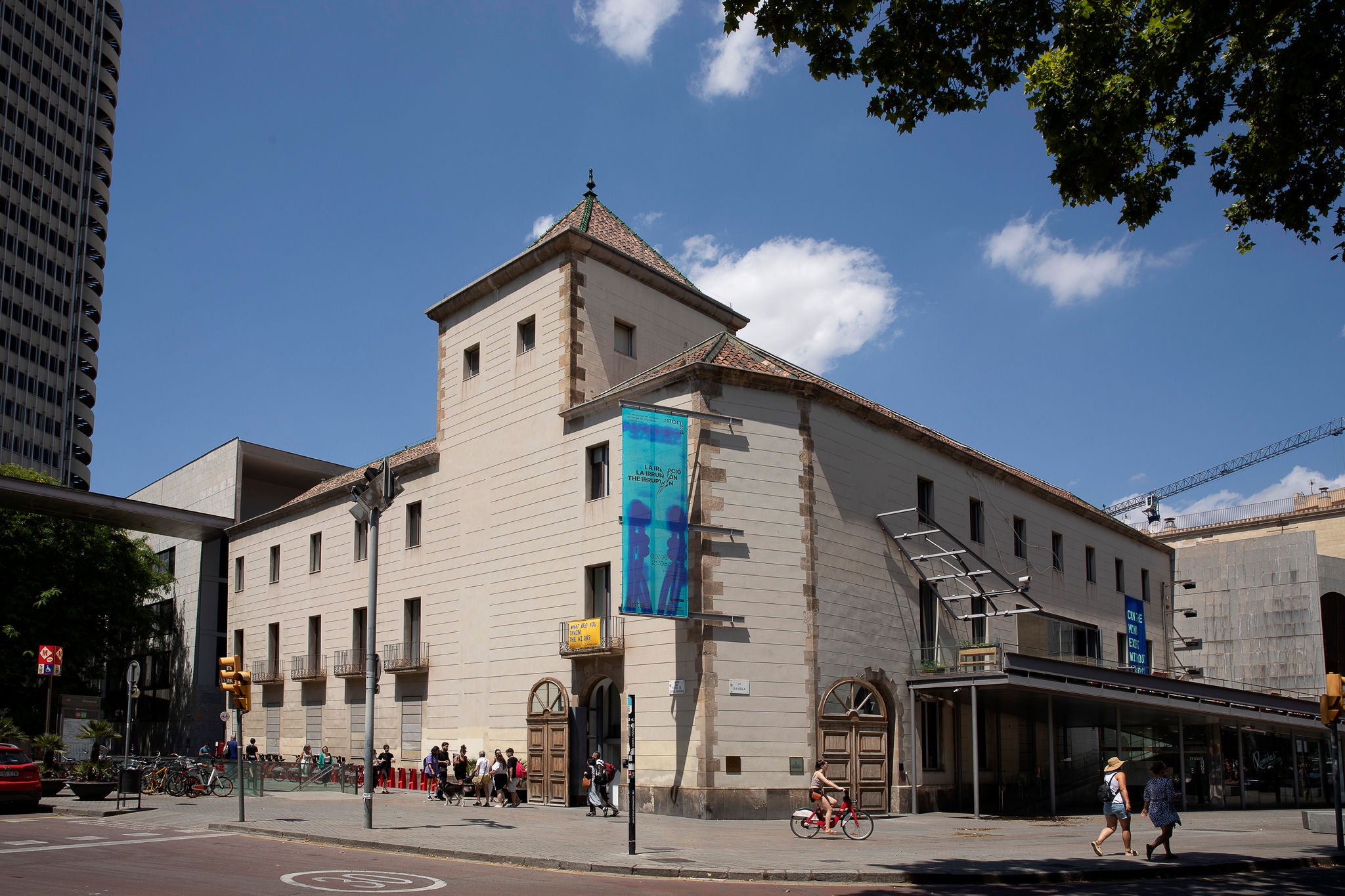SANTA MÒNICA

The Santa Mònica Arts Centre in Barcelona traces its origins to the former convent of the Augustinians, built in 1636 on the Rambla de Santa Mònica. This convent was part of the group of monasteries that were established on the Rambla and contributed to its urbanization. After the disentailment of 1835, the building was repurposed multiple times, serving as the headquarters of the Faculty of Journalism of Barcelona, Red Cross offices, municipal facilities, a military barracks, and the neighborhood parish.
In 1984, the convent was declared a national historical-artistic monument and was repurposed into a centre dedicated to arts and culture. This transformation made it Barcelona's first public contemporary art centre. Architects Helio Piñón and Albert Viaplana led the renovation, preserving the classical and austere lines of the original building, with special emphasis on the central cloister. One of the most distinctive elements of the new intervention was the addition of an external ramp acting as an open balcony to the Rambla, enhancing the connection between the building's interior and exterior.
The Santa Mònica Arts Centre opened its doors on May 17, 1988, with the exhibition "Surrealism in Catalonia, 1924-1936." Since then, it has hosted over 150 exhibitions and numerous activities, becoming a cultural landmark in Barcelona. Over the years, the centre has been the venue for events such as the Spring Photography Festival, the Electronic Arts Festival, VideoDansa, and ArsLibris.
Throughout its history, the centre has been directed by various figures who have shaped its evolution and name. Between 1988 and 2002, under the direction of Josep Miquel Garcia, it was known as the Santa Mònica Arts Centre, establishing itself as a premier contemporary art exhibition venue. From 2002 to 2008, under Ferran Barenblit's direction, it was renamed CASM and took on a more conceptual and experimental programming approach. Under Vicenç Altaió (2009-2013), it was rebranded as Arts Santa Mònica and refocused on the intersection of art, science, and communication. Conxita Oliver led the centre from 2013 to 2014, emphasizing creativity with a program that included exhibitions, courses, meetings, and screenings. Between 2014 and 2017, Jaume Reus, selected through a public competition, implemented a more transversal approach, highlighting new artistic languages.
In 2021, Enric Puig Punyet was also selected through a public competition for an innovative project based on the most contemporary ideas. The transformation of the centre, now simply called Santa Mònica, has led to profound institutional changes, integrating many of the demands expressed by institutional critics and the artistic sector over the past decades. Through these efforts, Santa Mònica has positioned itself as a radically contemporary interdisciplinary arts centre, a laboratory of ideas and artistic experimentation that fosters collective work and ongoing dialogue between creative processes and other disciplines.
2021 – 2028 Project
Since the start of the new program in 2021, Santa Mònica has produced a dozen exhibitions, mostly with newly created works, and has established a stable, multidisciplinary, and transversal program, with 75% of participating artists being women or non-binary individuals.
Every four months, over forty artists and a curatorial committee engage in a collective construction process around a central theme. Simultaneously, "Les Mòniques" – resident artists selected through an annual public call – develop mediation prototypes to make artistic discourse more accessible to diverse audiences. Additionally, Santa Mònica has promoted a regular, diverse, and experimental program of small-format proposals presented to artistic collectives, creators, and local entities. Through this methodology, Santa Mònica is committed to relational and participatory projects aimed at generating different forms of social return and fostering an art that is desacralized, horizontal, and collectively conceived.
Following a narrative aligned with contemporary artistic debates, Santa Mònica has questioned the exhibition format with Exposar · No exposar-se · Exposar-se · No exposar and reviewed European modernity's influences with The Tradition That Runs Through Us. It has addressed ecological, social, and economic collapse with The Irruption and explored collectivization through Dozing on the accidental provocation and Utopia Rambles. With Full of Holes, it has reflected on image saturation in contemporary society, while Maroon Anti-Futurism and The Possibility of Not Having Been have proposed decolonial alternatives to European concepts of progress and artistic representation. In 2024, The Other Side, Màquines del temps, and Després del vendaval have continued to explore collective work methods. de treball en col·lectiu.
The development of the project has also brought deep institutional transformations to meet sector demands. Key efforts include redistributing resources and opportunities, significantly increasing artist participation in activities and exhibitions, and converting some technical roles into artistic positions. A code of good practices has been established, along with a public fee schedule to ensure fair artist fees, allocating 60% of the exhibition budget to artist remuneration. With all these initiatives, Santa Mònica aims to become a more transparent, open, accessible, participatory, and sustainable institution, based on listening and care.